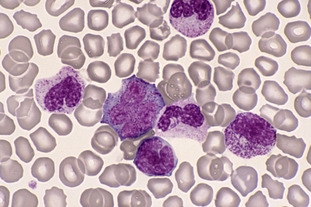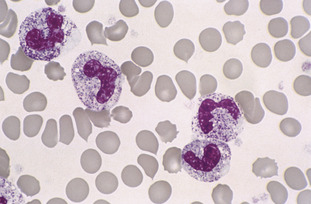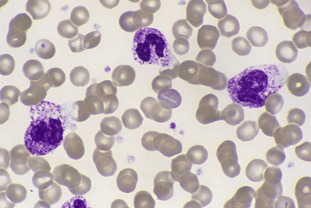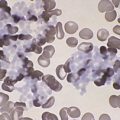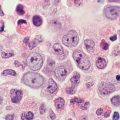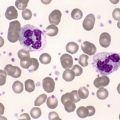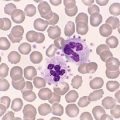C3. Benign disorders of leucocytes in the neonate and childhood
Neutrophilia
Neonatal neutrophilia
An absolute neutrophilia, present in the first few days of life, is associated with vaginal birth and hence is not present when birth is by caesarian section. The absolute neutrophil count on day 1 ranges from 4.4 to 21.0 × 109/L, and by day 7 falls to between 1.5 and 15.3 × 109/L. This early physiological neutrophilia is sometimes left-shifted, with an occasional myeloid precursor (e.g. myelocyte, metamyelocyte or band form) present on the peripheral blood film. Neutrophilia persisting beyond the first few days of life may be indicative of a bacterial infection.
Sepsis in the neonate
Diagnosis of neonatal septicaemia is one of the most difficult tasks in clinical medicine. In the neonate, bacterial infections have a high mortality rate despite the use of antibiotics. An increase in the number of neutrophils, the presence of toxic granulation and a left shift with band forms are all features suggestive of septicaemia. The presence of band forms may be the only indicator of sepsis; hence it is important to count every band form on a neonatal blood film. A ratio of band forms to total neutrophils of 0.2 or higher is suggestive of sepsis.
A band form has no nuclear segmentation. The width of the nucleus at any constriction point is not less than one-third of the width at its widest point.
Toxic granulation in isolation is not specific for sepsis and may be seen in other conditions such as Alder granulation, Chédiak-Higashi anomaly, cytokine (granulocyte colony-stimulating factor, G-CSF) therapy, inflammatory bowel disease (Crohn’s disease and ulcerative colitis), Stevens-Johnson syndrome and Kawasaki disease. Refer to Figure C3-1 and Figure C3-2.
Kawasaki disease
Kawasaki disease is an acute febrile vasculitis of unknown aetiology affecting children from 2 months to 5 or more years of age. It is characterised by a non-exudative conjunctivitis, erythematous lips and a strawberry tongue, erythematous and oedematous hands and feet, and an erythematous truncal and desquamating perineal rash.
The blood picture is that of a normochromic normocytic/hypochromic microcytic anaemia (according to the age) with an absolute neutrophilia, thrombocytosis and a raised erythrocyte sedimentation rate (ESR). The neutrophils show toxic granulation, vacuolation and cytoplasmic swelling of the neutrophil membrane.
Recognition of these morphological changes, in conjunction with the clinical characteristics, aids in making a diagnosis of Kawasaki disease. This is vital since Kawasaki disease may lead to coronary artery aneurysms in early adulthood if not treated appropriately. Refer to Fig C3-3.
Stay updated, free articles. Join our Telegram channel

Full access? Get Clinical Tree


